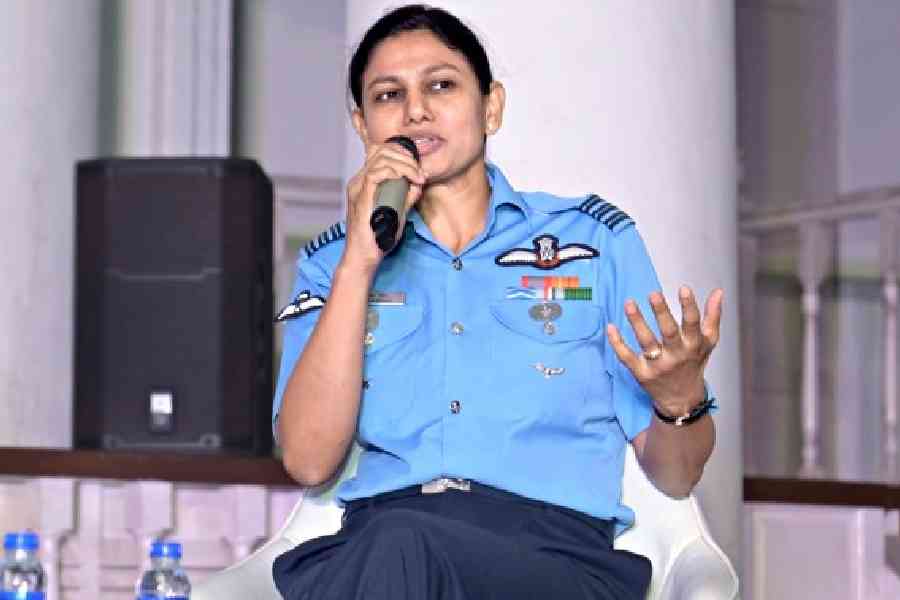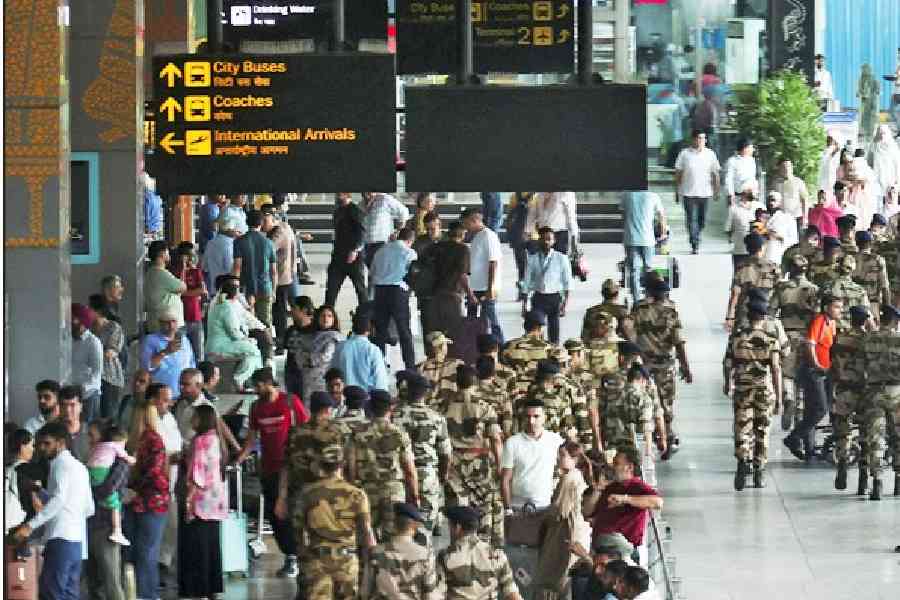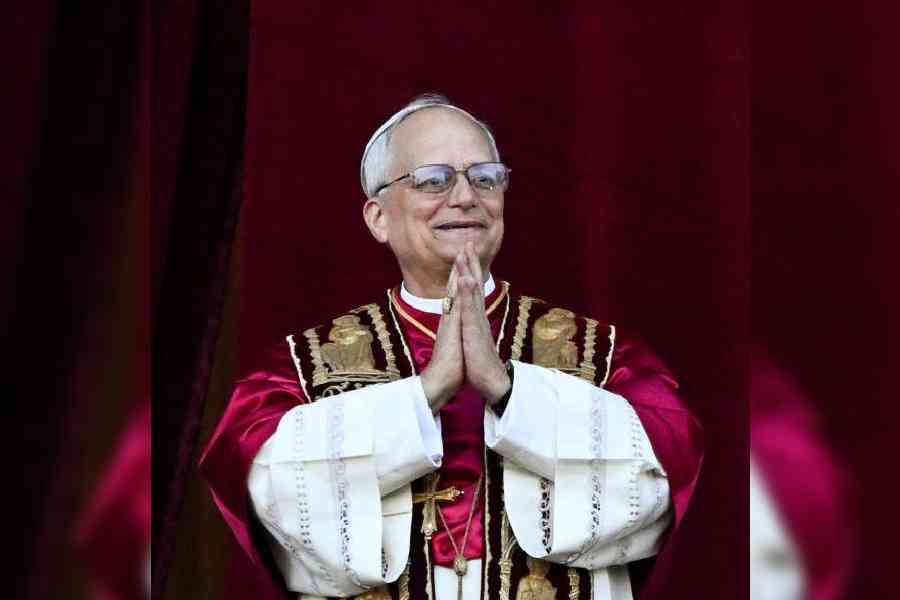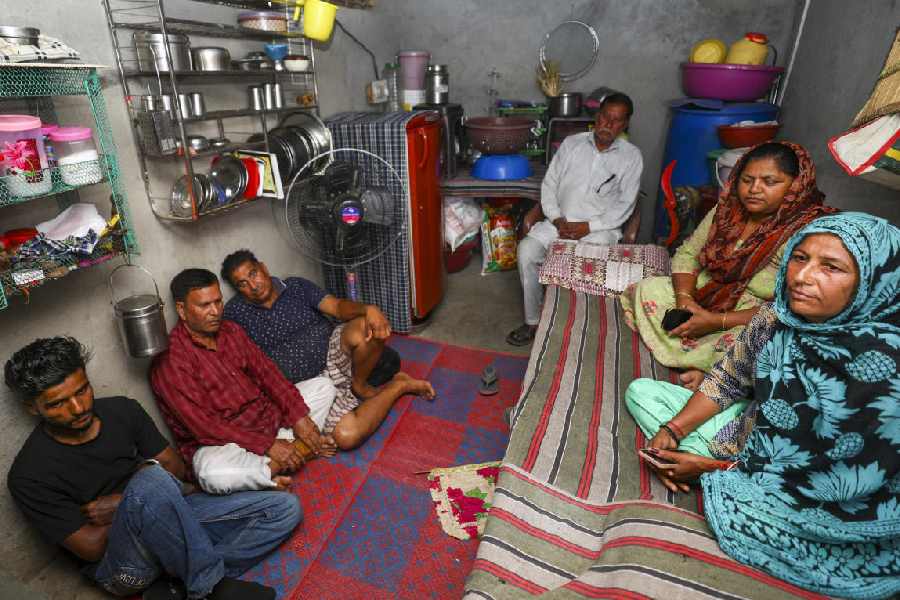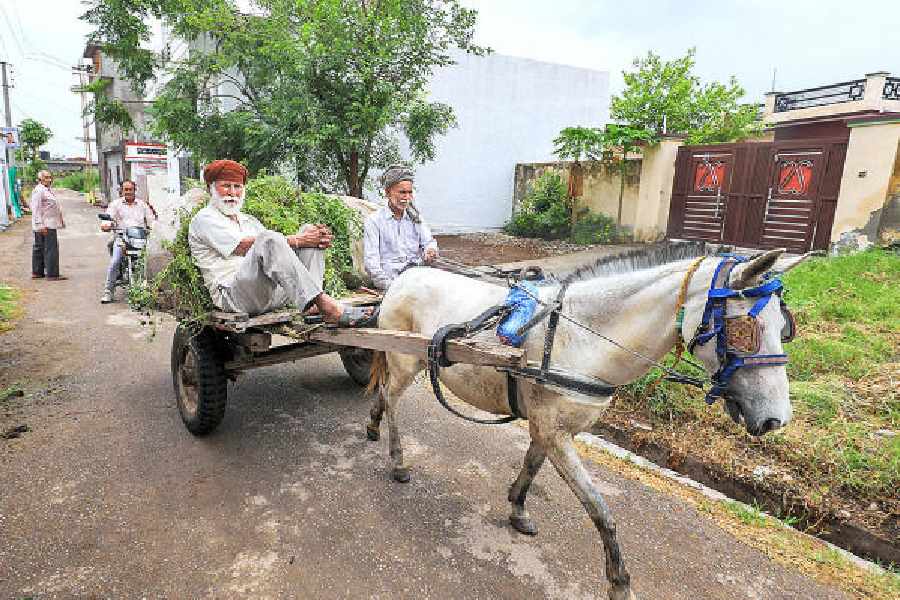 |
| Leah Raphael Curtis at the workshop |
Leah Raphael Curtis seems to glide through the air, though her feet are on the wooden floor. Her face breaks into a smile, as her “students” follow behind.
Dressed in sweatpants and T-shirt, hair tied in a loose ponytail, with a white stone shimmering on her pierced nose, Leah demonstrates with every movement of her graceful limbs the evidence of a prolonged association with dance.
“I started learning classical ballet at the age of four, but after many years, I realised ballet has its restrictions. It is a rigid form. That’s when I started experimenting and moved on to contemporary dance forms,” says Leah at a workshop on fitness through dance at Weavers Studio Centre for the Arts on Thursday.
Leah has trained at Alvin Ailey School of Dance in New York, Dance Theater of Harlem, Joffrey Ballet School and Limon Institute and has a Bachelor’s degree in theatre from London Studio Centre.
She is teaching contemporary dance at the workshop. Her students range from schoolkids to middle-aged women in salwar kurtas. She leaves them to discover the beat within them. “I think everyone has dance inside them. Sometimes people hold themselves back too tightly,” she said.
She asks her pupils to close their eyes and let their body react to the music, to use their body movements to draw circles. As she speaks, she demonstrates the movements with her hands, fingers, feet, hips and shoulders and then lets the others try, guiding the shy ones, but making it seem more like she is dancing with them than teaching.
“I love Indian dance forms, especially kuchipudi and kathak,” says the dancer who performs with Padatik and Dance World India when she is in the city. She says ballet and Indian classical dance forms have one essential difference. “Most Indian forms are representative of religion. They have a narrative form. But ballet does not always tell a story.” She thinks the audience in India is great, but yet to be exposed “to true contemporary dance”.
Baisakh basics
Bel garlands strung up like streamers and wrapped around the wrists of guests, large pankhas and oil paintings on the walls, the rustle of tussar and brocade, glasses of cool aampora sharbat and the harmonium bursting into life on the low dais, as Biman Mukhopadhyay sang the old Baithaki song “Ator, golap chhora chhori”. And an elaborate Bengali dinner to round it off — thus was Nabo Barsho ushered in at the Bengal Club.
The jalsa on April 14 at the club was conceived by architect and club president Dulal Mukherjee. Starting with Indrani Sen’s rendition of Tagore’s Oi pohailo timiro raati and Pabitra Sarkar’s recap of the origins of the Bengali calendar, the programme led to Samaresh Majumdar’s recollections of his first, disastrous attempt to write a play that had kickstarted his writing career and veteran singer Biman Mukhopadhyay’s nostalgic medley of past singers and lyricists Dasarathi Roy and Ranjit Roy.
Jagannath and Urmimala Basu read Banani Mukhopadhyay’s Ekaaler Kopalkundala, but the script paled before Manoj Mitra’s hilarious Dampati, read out by the dramatist and his daughter Mayuri.
Poulomi Banerjee & Sebanti Sarkar






